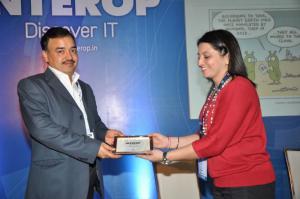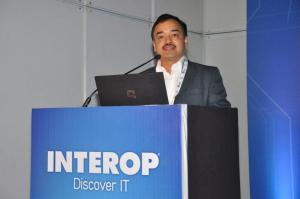Hybrid Cloud is defined as a multi-Cloud IT environment composed of traditional IT and multiple Private Clouds and Public Clouds in the same enterprise. The definition by National Institute of Standards and Technology (NIST) states “A Hybrid Cloud is a combination of Public and Private Clouds bound together by either standardized or proprietary technology that enables data and application portability.”
Hybrid Cloud promises greater control and security than a pure public cloud environment and greater flexibility than a private cloud environment through a phenomenon like cloud bursting which is possible only in a hybrid cloud environment. That’s the biggest reason it is gaining more and more momentum in the cloud world and enterprises are increasingly evaluting hybrid cloud models.
The key in a hybrid cloud environment is the ability to achieve federation of data and resources between internal data centers, private cloud and public cloud. The complexity lies in enabling the enterprises with the ability to move data and resources between internal and third party data centers in a seamless manner with zero disruption in end user experience and service levels.
Challenges in managing a hybrid cloud environment
The key challenges to look out for in a hybrid cloud environment include:
Integration: Due to the presence of both private and public cloud environments, enterprises must need to understand that two worlds may or may not be fully capable of integrating with each other. Enterprises need a cloud facilitator or cloud Broker to make these components talk to each other in a seamless manner.
Security: With scenarios like multi-tenancy by third party vendor and data transfers over internet becoming a necessity, concerns around data and information security become a major concern especially with the public cloud part of the environment. But with the latest data and information security policies e.g. data encryption, these environments can be secured.
Identity and access management: Most enterprises take the easy route and extend their existing identity and access policies to the third party public cloud implementations. But the risks are very different and hence a thorough evaluation and assessment of the impact of this on the organization’s security must be done before finalizing this.
Management tools: Existing service management tools manage the traditional environments very well, but they are not completely geared to cater to the intricacies of the new Hybrid world. Moreover rationalization of the tools environment is vital to derive the best out of a Hybrid environment.
How day-to-day IT Infrastructure management changes in hybrid cloud environments?
Hybrid Cloud is a new IT delivery paradigm, not a service model. ITIL is the framework which shapes this abstract concept into a working value chain enabling structured services to deliver business value to the enterprises. ITIL focuses on services and the services lifecycle which helps define and align the end-to-end service delivery models of Cloud. The core IT management principles will not change even in a hybrid environment, but will shift from the internal IT organization to the cloud service provider with ITIL remaining at the helm of it all.
A few considerations need to be taken care in the various disciplines of ITIL:
Service strategy: Hybrid cloud will have an impact on how the enterprise’s services are delivered and hence also how the roadmap of future offerings will look like.
Service design: IT service continuity management is an absolutely crucial component to focus on while designing a hybrid cloud environment. Besides this, supplier management requires increased rigor in a hybrid cloud scenario. Availability Management, Capacity Management and Service Level Management remain the other focus areas.
Service transition: Change Management and Release Management become areas of greater focus in hybrid Cloud as they require high degree of alignment and co-ordination with the third party vendor to ensure successful changes or releases with minimal disruption in the service.
Service operation: Though Incident Management, Problem Management, Event Management and Request Fulfillment remain important due to their direct impact on user experience, additional focus in a hybrid cloud is required for access management as it poses a huge security vulnerability when liaison with external cloud providers.
Continual service improvement: There is great potential in this process in hybrid cloud environment but if not implemented properly may result in misalignment of business needs and technical solution. Effective communication of KPIs, SLAs and Change Requests with external Cloud vendors helps resolve this issue in a timely manner.
Changes in governance model
Private and public cloud implementations need altogether new governance policies to work on. Compared to a scenario when for procuring a server in a traditional IT environment, the process is lengthy and time consuming starting from a formal request with the IT department, then after a chain of approvals the IT Procurement team with gather quotes from vendors, negotiate and select a vendor, the server will be purchased and shipped to the location and configured according to the company policies and requirements, this entire process taking months to complete, while in the current Hybrid Cloud environment, all requests will receive instantaneous provisioning.
To adhere to such high service levels and user expectations, there is a need for strong multi-level governance mechanisms for various activities in the Hybrid Cloud environment.
As enterprises move forward in their cloud journey, hybrid cloud will take another interesting and equally complex turn with Enterprises retaining some of their traditional IT infrastructure which cannot be moved to cloud. So in essence, Enterprise Hybrid cloud environments will include Private clouds, Public clouds and traditional IT infrastructure.
The governance will policies will have to adapt to the new scenarios and also a skilled IT Infrastructure Management partner will become a critical need.
Tools and IP for service management of enterprise hybrid cloud environment
To derive the most out of such hybrid environments, tools undoubtedly play a pivotal role. While the existing IT management tools are equipped to manage the traditional environments very well, they are not fully geared to cater to the intricacies of the new hybrid world. Hence there is an actual need for a Cloud Management System that is capable of answering questions such as:
How do I provision physical server, virtual machines and public cloud services all through the same console?
How is configuration management carried out and how is the CMDB populated?
How is the automation and orchestration of all my processes and workflows taken care of?
How does capacity management happen and consequently capacity optimization?
The answers to the above and many more such questions are not available all in a magical tool or set of tools. A comprehensive framework consisting of multiple tools and more importantly a set of processes that govern them will have to be developed to handle these tasks seamlessly.
So overall, while basic IT infrastructure Management fundamentials remain the same, a comprehensive customization in accordance with the vagaries of hybrid cloud world is extremely important to manage the hybrid environment. Given the rapid changes in cloud technologies, the management requirements will continue to evolve and one needs to be on top of the changes on an ongoing basis.
This article was published in InformationWeek…
http://www.informationweek.in/cloud_computing/12-04-27/hybrid_cloud_management-_understanding_the_landscape.aspx

